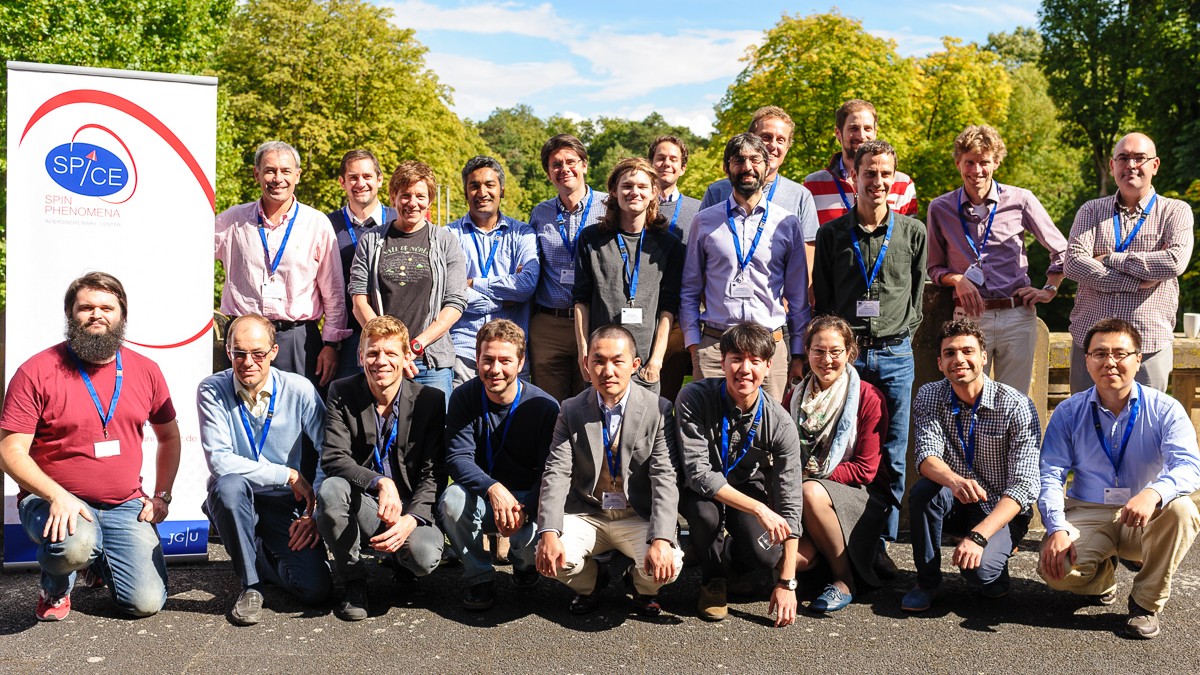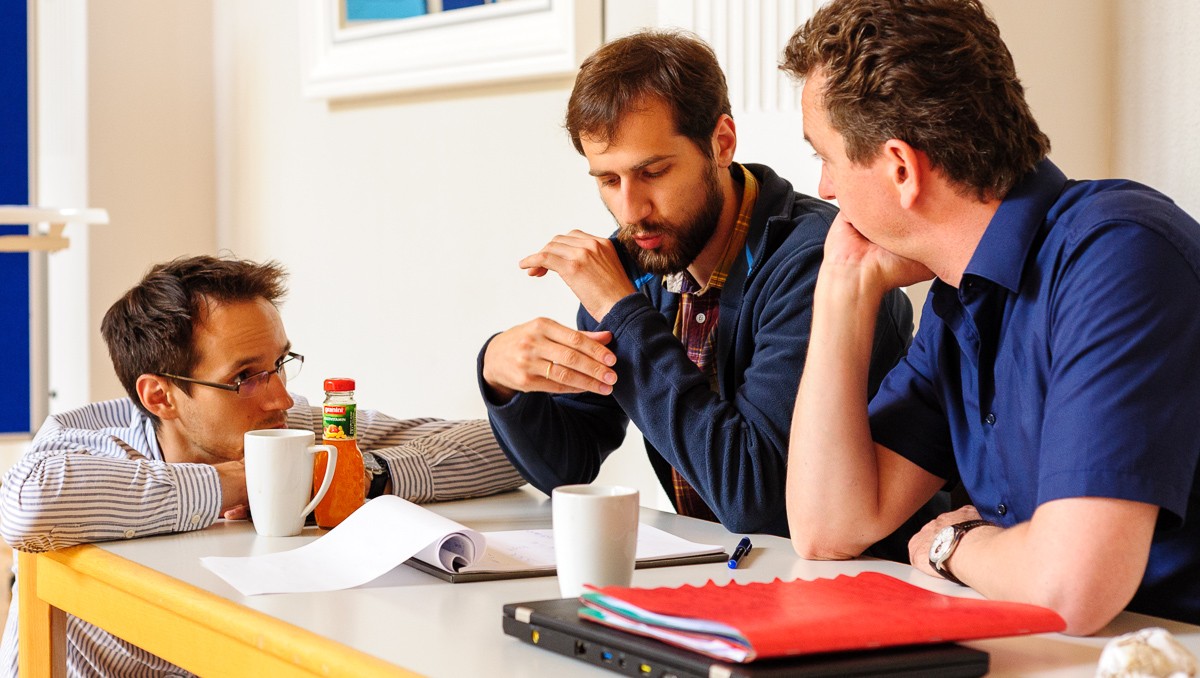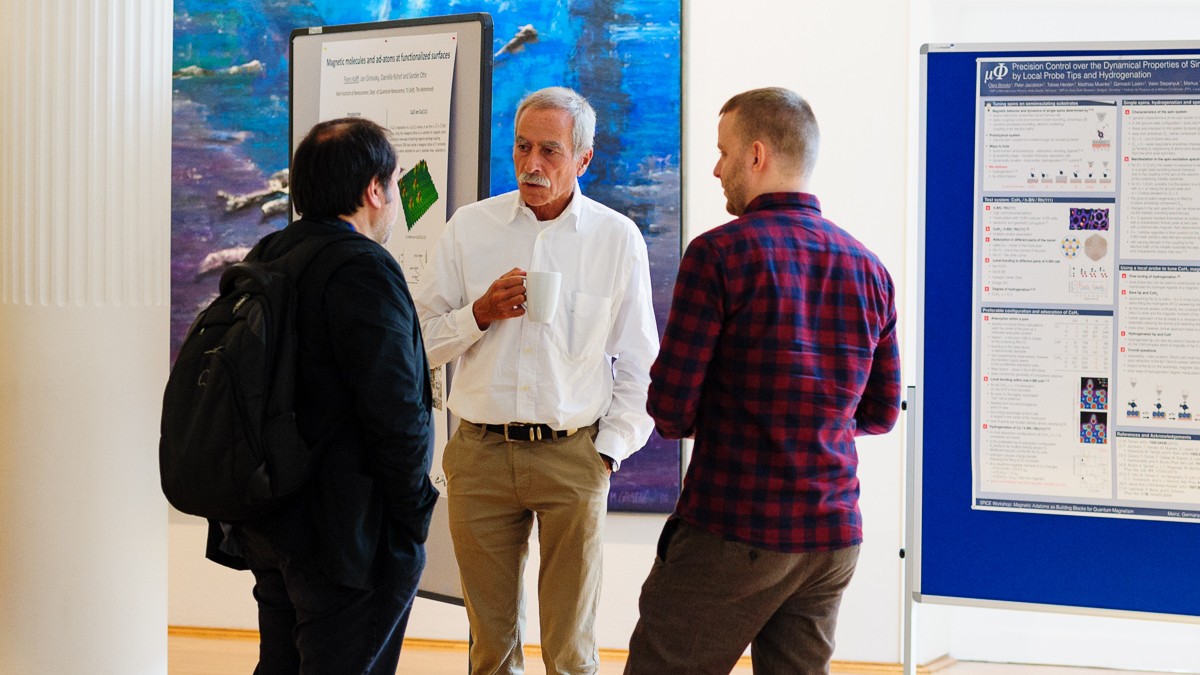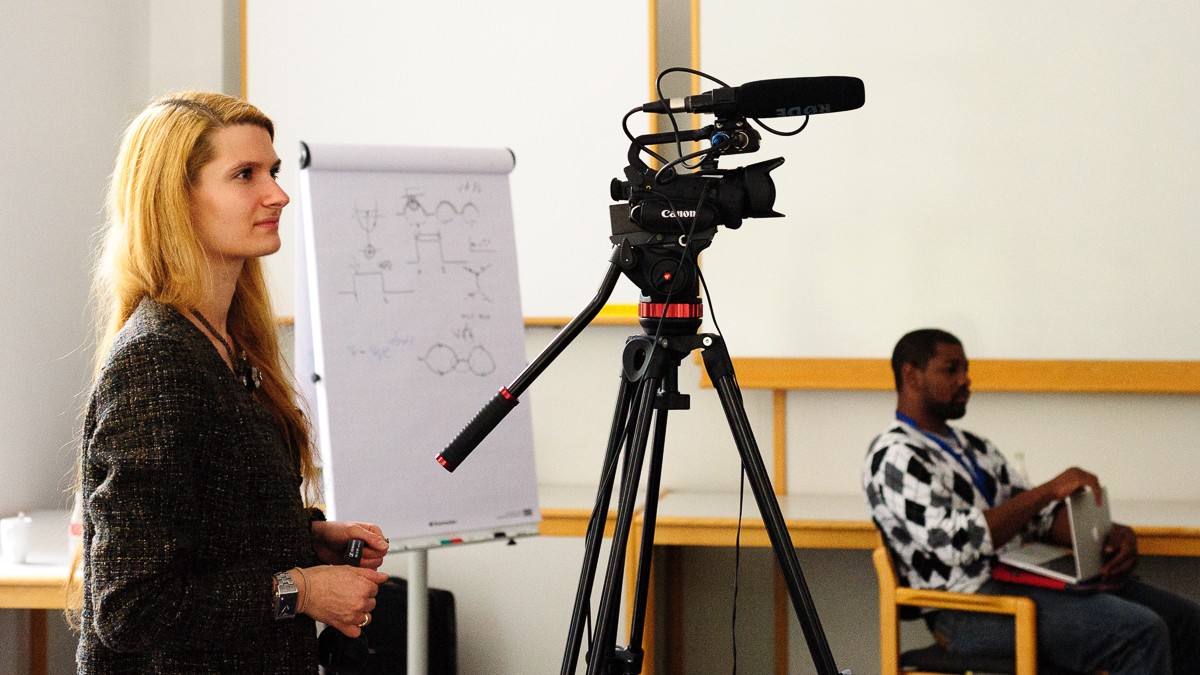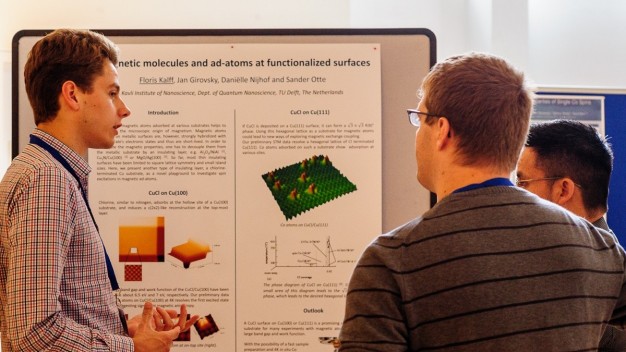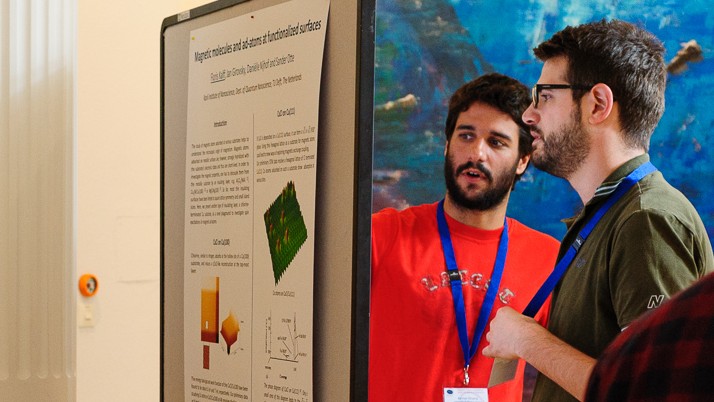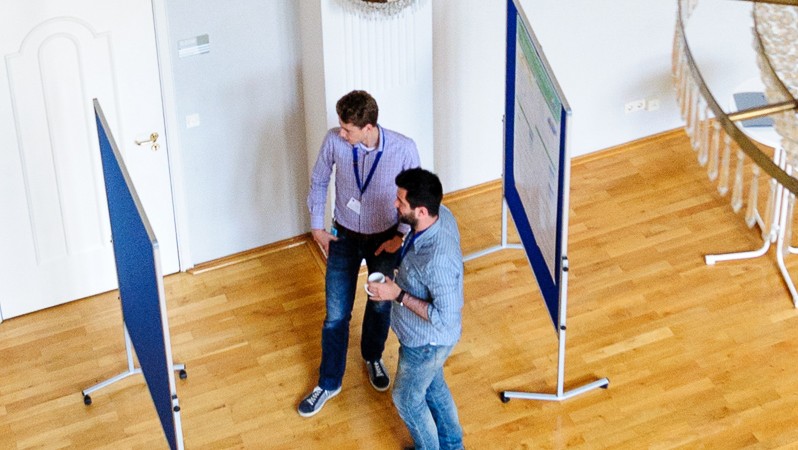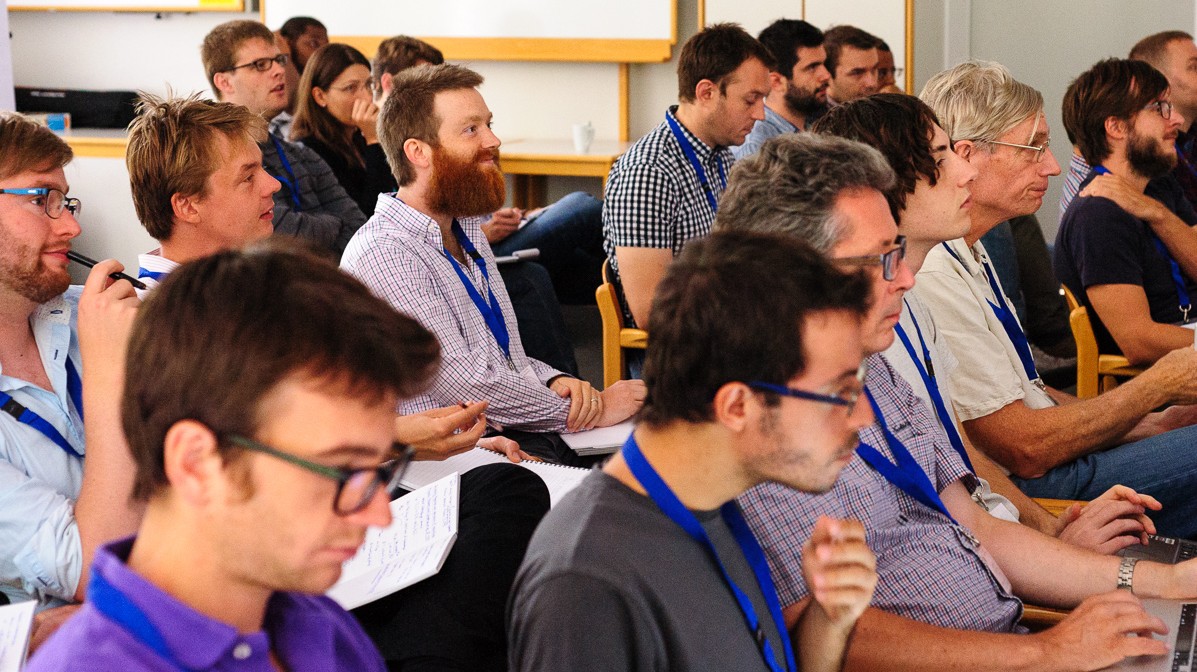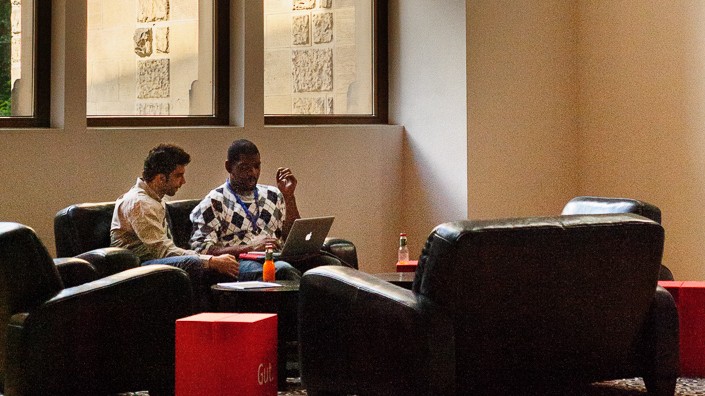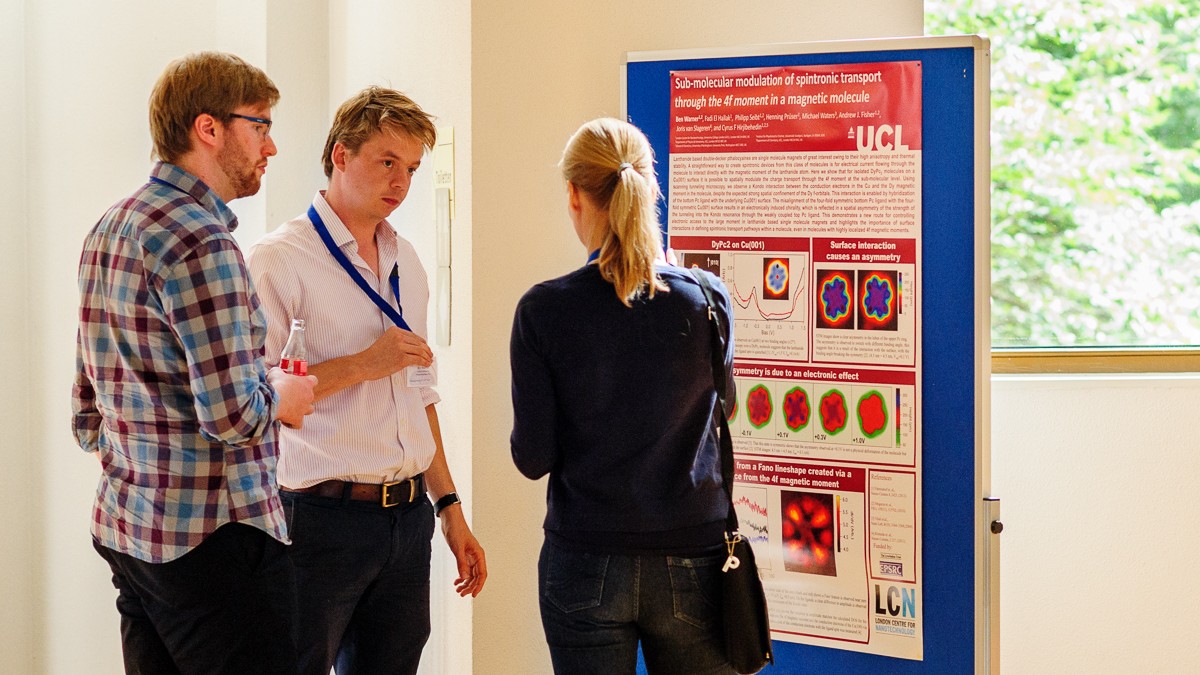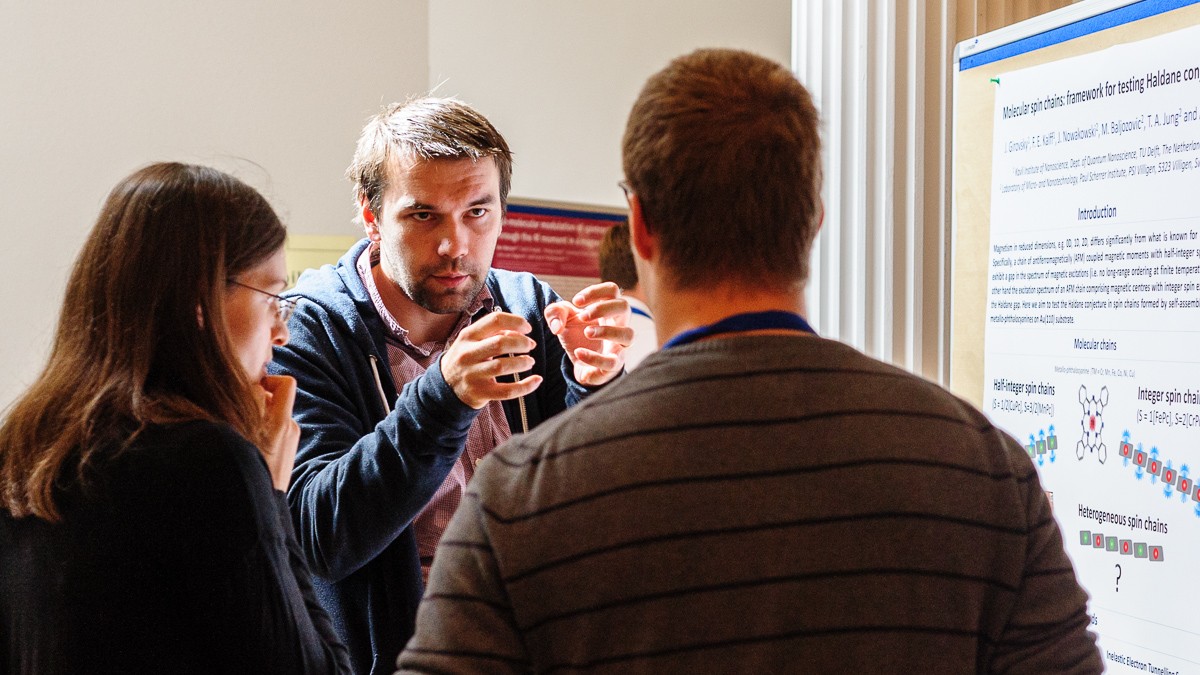SPICE-Workshop on Computational Quantum Magnetism May 2015
May 22-26 (2015), at Schloß Waldthausen, Mainz
(for full this in PDF format click here: participants list)
- Amaury Souza, University of Mainz
- Andrea Droghetti, Universidad del Pais Vasco, San Sebastian, Spain
- Andrea Scaramucci, Paul Scherrer Institut, Villigen, Switzerland
- Andrei Reyes Huamantinco, Materials Center Leoben, Austria
- Dr. Vladimir Antropov, Ames Laboratory
- Avijeet Ray, Indian Institute of Technology Roorkee
- Prof. Kirill Belashchenko, University of Nebraska - Lincoln
- Prof. Silke Biermann, College de France, Paris
- Prof. Andrey Chubukov, University of Minnesota
- Prof. Michael Coey, School of Physics and CRANN, Trinity College, Dublin
- Prof. Radu Coldea, University of Oxford
- Dr. J. Kay Dewhurst, MPI Halle, Germany
- Diana Prychynenko, University of Mainz
- Ekaterina Plotnikova, IFW Dresden, DE
- Emilie Bruyer, CNR-SPIN, 67010 L'Aquila, Italy
- Prof. Olle Eriksson, Uppsala University
- Prof. Claudia Felser, MPI Chemical Physics for Solids
- Florian Thoele, Materials Theory, ETH Zürich, Switzerland
- Frank Ortmann, Institute for Materials Science, TU Dresden, DE
- Friedrich Krien, ITP, Uni Hamburg, DE
- Prof. Antoine Georges, College de France, Paris
- Prof. Michel Gingras, University of Waterloo
- Prof. Eberhard Gross, Max Planck Institute of Microstructure Physics
- Harald Jeschke, Institut für Theoretische Physik, Uni Frankfurt, DE
- Hiroshi Shinaoka, ETH Zurich, Switzerland
- Hristo Velkov, University of Mainz, Germany
- Ilya Kashin, Ural Federal University (UrFU), Ekaterinburg, Russia
- Dr. George Jackeli, FMQ, University of Stuttgart and MPI-FKF
- Jacob Gayles, University of Mainz, Germany
- Jakub Zelezny, Institute of Physics, AVCR, v.v.i., Prague, Czech Rep
- Prof. Tomas Jungwirth, Institute of Physics, Academy of Sciences of the Czech Republic; School of Physics and Astronomy,University of Nottingham
- Karol Szalowski, University f Lodz, Poland
- Professor Mikhail Katsnelson, RadboudUniversity
- Kevin O'Brien, University of Cologne
- Dr. Giniyat Khaliullin, Max-Planck-Institut FKF Stuttgart
- Prof. Daniel Khomskii, II. Physikalisches Institut, Universität zu Köln
- Kira Riedl, Goethe-Univ., Frankfurt DE
- Libor Smejkal, Institute of Physics, AVCR, v.v.i., Prague, Czech Rep.
- Prof. Alexander Lichtenstein, University of Hamburg
- Malte Harland, University of Hamburg
- Martin Gradhand, University of Bristol, U.K.
- Dr. Igor Mazin, Naval Research Laboratory
- Prof. Frederic Mila, Ecole Polytechnique Federale de Lausanne
- Prof. Yuriy Mokrousov, Institute of Advanced Simulation, Forschungszentrum Jülich
- Ass. Prof. Yukitoshi Motome, The University of Tokyo
- Natalya Fedorova, ETH Zurich, Switzerland
- Noejung Park, Ulsan National Institute of Science and Technology, Korea
- Ass. Prof. Lars Nordström, Uppsala University
- Paolo Barone, CNR-SPIN, Genova, Italy
- Ass. Prof. Natalia Perkins, University of Minnesota
- Rafael Gonzalez, Universidad del Norte, Barranquilla, Colombia
- Sergii Khmelevskyi, Budapest University of Technology and Economics, Hungary
- Shayan Hemmatiyan, University of Mainz, Germany
- Dr. Igor Solovyev, National Institute for Materials Science, Japan
- Soon Cheol Hong, University of Ulsan, Korea
- Steve Winter, ITP, Goethe University Frankfurt
- Dr. Sergey Streltsov, Institute of Metal Physics
- Sung-Hyon "Sonny" Rhim, University of Ulsan, Korea
- Prof. Ronny Thomale, TP1, University of Würzburg
- Prof. Roser Valenti, ITP, Goethe University Frankfurt DE
- Prof. Mark van Schilfgaarde, King's College London
- Prof. Mike Whangbo, North Carolina State University
- Dr. Alexander Yaresko, MPI FKF, Stuttgart
- Yasir Iqbal, Institute for Theoretical Physics, Uni-Würzburg, DE
- Yasuyuki Kato, RIKEN CEMS, Japan
SPICE-Workshop on Bad Metal Behavior in Mott Systems
June 29-July 2 (2015), at Schloss Waldthausen, Mainz
(for full this in PDF format click here: participants list)
- Prof. Neven Barisic, Vienna University of Technology
- Mr. Marcello Civelli, LPS, Université Paris Sud
- Dr. Luca de' Medici, European Synchrotron Radiation Facility
- Prof. V. Dobrosavljevic, Florida State University and MagLab
- Prof. Martin Dressel, Universität Stuttgart
- Dr. Simone Fratini, Institut Néel - CNRS and UGA
- Prof. Marc Gabay, Universite Paris-Sud
- Prof. Nigel Hussey, High Field Magnet Laboratory, Radboud University
- Dr. Isao Inoue, AIST
- Dr. Doo Seok Jeong, Korea Institute of Science and Technology
- Darshan G. Joshi, TU Dresden
- Prof. Jinfeng Kang, Peking University
- Prof. Kazushi Kanoda, Department of Applied Physics, University of Tokyo
- Prof. H. Kohlstedt, CAU Kiel
- Tsung-Han Lee, Florida State University
- Ke Liu, Instituut Lorentz, Leiden University
- Dr. Jianming Lu, University of Groningen
- Patrick Marshall, University of California, Santa Barbara
- Balazs Meszena, Lorentz Institute (Leiden University)
- Prof. Eduardo Miranda, State University of Campinas
- Dr. Pierre Monceau, Institut Néel, CNRS, Grenoble (France)
- Dr. Jernej Mravlje, Jozef Stefan Institute
- Dr. Keiju Murata, Keio University
- Dr. T.Mussenbrock Ruhr, University Bochum
- Oscar Andres Najera Ocampo, LPS-Orsay, Université Paris Sud
- Dr. Jaakko Nissinen, Instituut-Lorentz for Theoretical Physics
- Dr. Takashi Oka, The University of Tokyo
- Prof. Masaki Oshikawa, The University of Tokyo
- Prof. Yuriy Pershin, University of South Carolina
- Prof. Philip Phillips, University of Illinois
- Dr. Dragana Popovic, National High Magnetic Field Lab., Florida State University
- Dr. Louk Rademaker, Kavli Institute for Theoretical Physics, UCSB
- Dr. Milos Radonjic, EKM, Institute of Physics, University of Augsburg
- Andrea Rohwer, Physikalisches Institute, Universität Stuttgart
- Prof. Marcelo Rozenberg, LPS-Orsay, Université Paris Sud
- Prof. D. D. Sarma, Indian Institute of Science
- Prof. Joerg Schmalian, Karlsruhe Institute of Technology
- Prof. Ivan Schuller, UCSD
- Akihiko Sonoda, Osaka University
- Prof. Susanne Stemmer, UC Santa Barbara
- Prof. Tomohiro Takayama, MPI Stuttgart
- Shao Tang, The National High Magnetic Field Laboratory
- Prof. Senthil Todadri, Massachusetts Institute of Technology
- Mizuki Urai, University of Tokyo
- Jaksa Vucicevic, Institute of Physics Belgrade, Serbia
- Prof. H.-S. Philip Wong, Stanford University
- Masahiko Yamada, Institute for Solid State Physics
- Prof. Jianting Ye, Zernike Institute for Advanced Materials
- Prof. Jan Zaanen, Leiden University
- Dr. Martin Ziegler, Nanoelektronik, CAU Kiel
- Liujun Zou, Harvard University
Workshop on Spin Transport and Spin Pumping in Organics
September 14th-15th 2015
This workshop focused on understanding and manipulating spin and charge transport through pi-conjugated polymers and exploiting its many possibilities. It explored the synergies that bringing closer together the spintronics and organics community can yield. The workshop is closely linked to the focus of the recent ERC Synergy grant "Spin-charge conversion and spin caloritronics at hybrid organic-inorganic interfaces".
- To Image 1
- To Image 2
- To Image 3
- To Image 4
- To Image 5
- To Image 6
Photos: Sabrina Hopp
The workshop covered topics in organics (synthesis, charge transport, etc), the current status of organic spintronics, inorganic based spintronics in order to come to a common language and define common challenges. The program covered topics in organics (synthesis, charge transport, etc), the current status of organic spintronics, inorganic based spintronics. It included presentations of the latest results as well as some tutorial like talks.
Organizers
Jairo Sinova, Erik McNellis, and Henning Sirringhaus
Confirmed Speakers and Participants
Cespedes, Oscar
Di Pietro, Riccardo
Hematiyan, Shayan
Hou, Dazhi
Jellett, Cameron
Kang, Keehoon
Koopmans, Bert
Kremer, Kurt |
Li, Yuan
Manchon, Aurelien
McCulloch, Iain
McNellis, Erik R.
Melo Souza, Amaury
Nelson, Jenny
Nielsen, Christian
Olivier, Yoann |
Poelking, Carl
Schott, Sam
Sinova, Jairo
Sirringhaus, Henning
Venkateshvaran, D.
Wittmann, Angela
Wunderlich, Joerg |
Workshop on Magnetic Adatoms as Building Blocks for Quantum Magnetism August 2015
August 17th-20th 2015
The communities of quantum magnetism and surface nanomagnetism have been, so far, two different worlds, without many common interests and problems. Recent developments in scanning tunneling microscopy (STM) now permit probing and fabricating spin chains and many other artificial spin systems, providing a new ground to explore quantum magnetism phenomena. The potential synergy that this approach can bring forward has been illustrated by the recent observation of Majorana quasiparticles on nanoengineered spin chains by means of STM spectroscopy.
- To Image 1
- To Image 2
- To Image 3
- To Image 4
- To Image 5
- To Image 6
- To Image 7
- To Image 8
- To Image 9
- To Image 10
- To Image 11
Photos: Sabrina Hopp
1) The quantum magnetism community learned about the exciting new possibilities to explore quantum magnetism in nano engineered spin chains.
2) The surface magnetism community learned about the fascinating physical concepts that are being explored in quantum magnetism.
Problems of interest included fabrication and probing nanoengineered spin systems, quantum spin liquid properties in finite size systems, the emergence of non-trivial phenomena such as fractionalization in finite size systems, the interplay between Heisenberg coupling between magnetic atoms on a surface and their Kondo coupling, the interplay between magnetism and superconductivity in interacting spin chains, including the emergence of Majorana particles, the transition between quantum and classical behavior in spin systems.
FORMAT: The meeting lasted 4 days and brought together 50 researchers. The program included three types of talks:
- School-like invited lectures, 50+10 minute discussion, tutorial style covering well established results, trying to reach the non-experts.
- Workshop-like 25+5m invited talks, presenting results that are potentially appealing for the two communities.
- Contributed talks (15+5m) with recent developments in these rapidly evolving fields.
There was a total of 7 tutorials, distributed over the program and followed by focused shorter talks. In addition, poster sessions were held intercalated in the middle of the program, and formed an important part of the program. Plenty of time was allocated for additional discussions.
Scientific Organizers
Cristian Batista, Los Alamos National Lab (LANL), US
Joaquín Fernández-Rossier, International Nanotechnology Laboratory (INL), Portugal
Sander Otte, TU Delft, The Netherlands
SPICE co-organizer
Jairo Sinova
Tutorials
Affleck, I. (UBC)
Glazman, L. (U. Yale) |
Hirjibehedin, C. (LCN, UK)
Ternes, M. (MPI Stuttgart) |
Wiesendanger, R. (U. Hamburg)
Mila, F. (EPFL) |
Invited Speakers
Blügel, S. (PGI Jülich)
Brihuega, I. (U. Aut. Madrid)
Brune, H. (EPFL)
Cren, Tristan (Paris)
Delgado, F. (UPV, Spain)
Feiguin, A. (Northeastern University)
Franke, K. (TU Berlin)
Giarmarchi, T. (U. Geneva) |
Heidrich-Meisner, F. (LMU Munich)
Jacob, D. (MPI Halle)
Lorente, N. (ICN, Barcelona)
Loth, S. (CFEL, Hamburg)
Nadj-Perge, S. (TU Delft)
Otte, S. (TU Delft)
Starykh, O. (U. Utah) |
Taroni, A. (Nat. Phys. Editor)
Steinbrecher, M. (U. Hamburg)
Zitko, R. (U. Ljubljana) |
Young Research Leaders Group Workshop:
Frontiers with strongly correlated and topological mesoscopic systems
August 3rd-14th 2015
This workshop, which was the first of its kind, aimed to start new and increasing collaborations, and seek for research topics of tomorrow across disciplines in condensed matter physics. The workshop format focused on groups of researches at their early careers but with already established and highly regarded research profiles. It brought together the research excellence elite of the next generation.
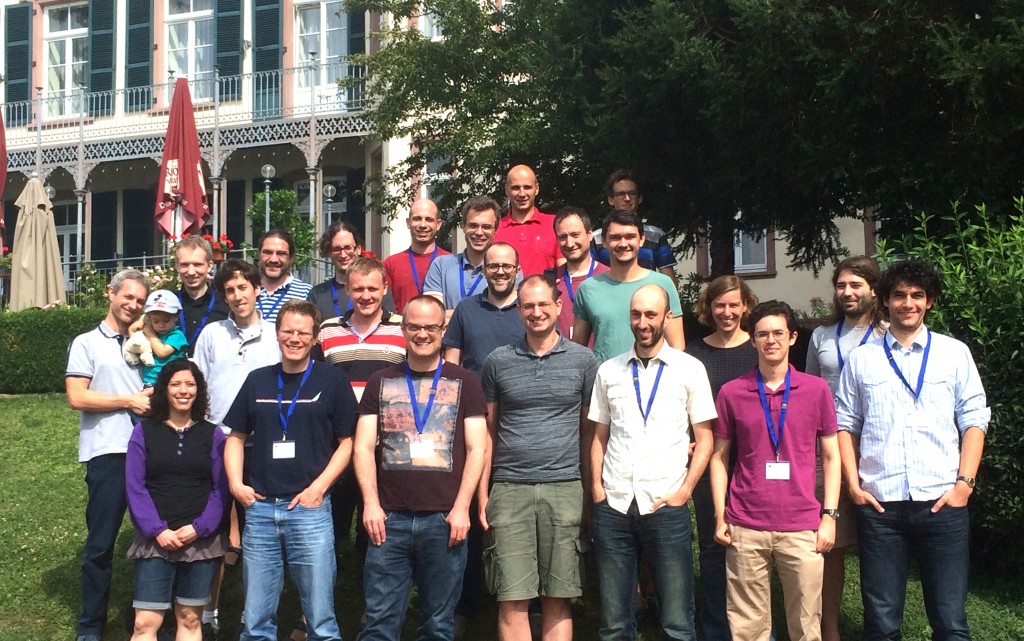 The format of the meeting during the first week included detailed introductory talks followed by more technical presentations. The second week of the meeting provided time for participants to fruitfully interact, exchange ideas and make study groups to learn from each other.
The format of the meeting during the first week included detailed introductory talks followed by more technical presentations. The second week of the meeting provided time for participants to fruitfully interact, exchange ideas and make study groups to learn from each other.
The main theme of this first workshop was to explore frontiers with strongly correlated and topological mesoscopic systems. The specific topics included:
- nonlinear, helical, spiral Luttinger liquids and quantum Hall edge states;
- superconductor/topological insulator (or quantum Hall) nanostructures
- many-body localization
- 2D physics at oxide interfaces
- 3D quantum materials: Dirac, Weyl , Kondo, 3He, Spin liquids, etc
Scientific Organizers
Alex Levchenko (MSU), Katja Nowack (Cornell), Andrea Young (UCSB)
SPICE co-organizers
Georg Schwiete and Jairo Sinova
Invited Participants (confirmed)
Abanin, Dmitry (Perimeter)
Akhmerov, Anton (Delft)
Auslaender, Ophir (Technion)
Bagrets, Dmitry (Cologne)
Berg, Erez (Weizmann)
Bettelheim, Eldad (Hebrew)
Dean, Cory (Columbia)
Dzero, Maxim (Kent) |
Finck, Aaron (UIUC)
Foster, Matt (Rice)
Garate, Ion (Sherbrooke)
Ilani, Shahal (Weizmann)
Khodas, Maxim (Hebrew)
Koenig, Markus (Dresden)
Manucharyan, Vlad (Maryland)
Michaeli, Karen (Weizmann) |
Micklitz, Tobias (Rio)
Mitra, Sami (Physical Review Letters)
Nadj-Perge, Stevan (Princeton)
Pesin, Dima (Utah)
Pollanen, Johannes (Caltech)
Pribiag, Vlad (U Minnesota)
Rudner, Mark (Copenhagen)
Schmidt, Thomas (Luxemburg)
Sela, Eran (Tel Aviv) |
SPICE-Workshop on Bad Metal Behavior in Mott Systems
June 29-July 2 (2015), at Schloss Waldthausen, Mainz
Introduction
The "Bad-metal" behavior phenomenon is often viewed as one of the key unresolved signatures of strong correlation physics. It has been identified in many Mott systems, such as cuprates, manganites, ruthenates, iridates, heavy fermions, organic charge-transfer salts, and the recently discovered iron pnictides. Many of the exotic features of these materials have been linked to quantum criticality of the Mott metal-insulator transition type. Many open fundamental questions still beg a convincing answer and may require to re-examine the familiar paradigms and to venture beyond it in new directions. It is an area that merges many different theoretical branches ranging from spin-fluctuation theories, to dynamical mean-field theory methods, to topological field theories, and even holographic duality - ideas borrowed from superstring theory. These fundamental emergent physics topics are now being applied in the design and fabrication of new devices for future technology. “Memristive” resistance-switching devices, novel power transistors, as well as “synaptic” devices that mimic the function of the neuron, are just a few of the possibilities.
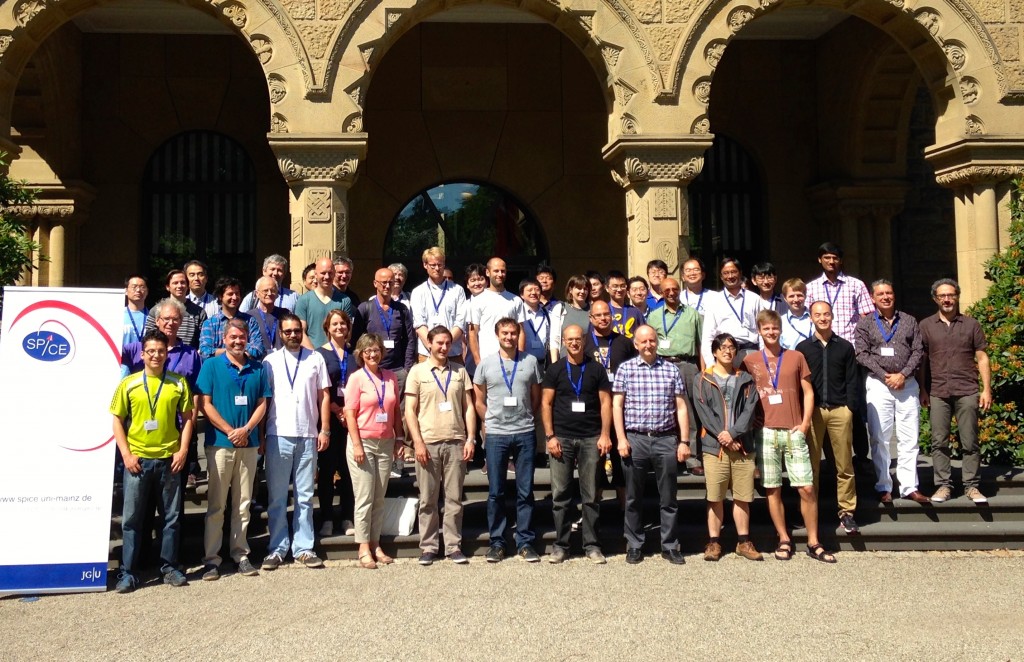 This workshop addressed both the fundamental issues associated with this new type of phase transition, and its many consequences for material science and technology. Our invited speakers covered the most exciting discoveries in this broad field. The workshop immersed scientific talks, overview talks aimed to the other communities, and round table discussions of future directions. This aspect was of particular value to graduate students, postdocs, and early-career faculty members.
This workshop addressed both the fundamental issues associated with this new type of phase transition, and its many consequences for material science and technology. Our invited speakers covered the most exciting discoveries in this broad field. The workshop immersed scientific talks, overview talks aimed to the other communities, and round table discussions of future directions. This aspect was of particular value to graduate students, postdocs, and early-career faculty members.
Besides the talks, there were several hour-long lectures of educational/review character. In addition, the participants contributed poster presentations.
Scientific Organizers
Vladimir Debrosavljevic (Magnet Lab and FSU), Isao Inoue (AIST Tsukuba), and Marcelo Rozenberg (CNRS-Orsay)
SPICE co-organizers
Jairo Sinova
Invited Speakers (preliminary list of confirmed speakers)
Civelli, M. (Paris Sud)
DiMedici, L. (Grenoble)
Dressel, M. (Stuttgart)
Dobrosavljevic, V. (Florida State University)
Fratini, S. (Grenoble)
Gabay, M. (LPS, Orsay)
Hussey, N. (Nijmegen)
Inoue, I. (AIST)
Jeong, D. S. (KIST, Seoul)
Kang, J. (Beijing)
Kanoda, K. (Tokyo) |
Kohlstedt, H. (Kiel)
Mravlje, J. (Jozef Stefan Institute)
Miranda, E. (Campinas)
Monceau, P. (Grenoble)
Oka, T. (Tokyo)
Oshikawa, M. (Kashiwa)
Pershin, Y. V. (Columbia)
Phillips, P. (Illinois)
Popovic, D. (Florida)
Rademaker, L. (UC Santa Barbara) |
Rozenberg, M. (Orsay)
Sarma, D. D. (Bangalore)
Schmalian, J. (Karlsruhe)
Schuller, I. (San Diego)
Senthil, T. (MIT, Cambridge)
Stemmer, S. (Santa Barbara)
Takagi, H. (MPI Stuttgart)
Varma, C. (UC Riverside)
Wong, H.-S.Phillip (Stanford U)
Ye, J. (U Groningen)
Zaanen, J. (U Leiden) |
SPICE-Workshop on Computational Quantum Magnetism May 2015
May 22nd - 25th 2015
In the last decade substantial progress has been made in computational magnetism. The leading ab initio codes have acquired capability to handle noncollinear spin systems, including spin spirals, which allows for comprehensive studies of most important magnetic systems, such as rare earth and 5d-based materials, dilute magnetic semiconductors, spin-polarized surface and interfaces etc. Advances beyond the density functional theory, such as the dynamic mean field theory (DMFT) or ab initio Gutzwiller methods allows proper handling of strongly correlated systems.
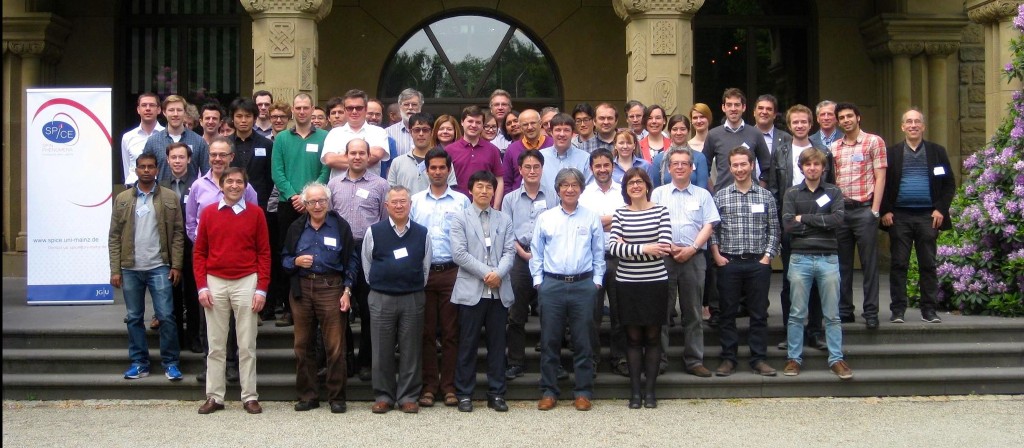
At the same time development of model approaches such as functional renormalization group, direct diagonalization or Monte Carlo simulations have also been developed considerably and their capability has expanded far beyond the level of a decade or two ago.
This workshop brought together model and computation theorists, as well as some experimentalists, to summarize the progress that has been made in the last 10-15 years, formulate outstanding problems and promote cooperation between different directions.
Scientific Organizers
Roser Valenti (Frankfurt), Alexander Lichtenstein (Hamburg), and Igor Mazin (Washington)
SPICE co-organizers
Jairo Sinova
Invited Speakers (all confirmed)
W. Antropov (Ames)
K. Belashchenko (Nebraska)
S. Biermann (Palaiseau)
A. Chubukov (Minnesota)
M. Coey (Dublin)
R. Coldea (Oxford)
O. Eriksson (Uppsala)
C. Felser (Dresden)
A. Georges (Paris)
M. Gingras (Waterloo) |
E. K. U. Gross (Halle)
G. Jackeli (Stuttgart)
T. Jungwirth (Prague)
M. Katsnelson (Nijmegen)
G. Khaliullin (Stuttgart)
D. Khomskii (Cologne)
C. Lacroix (Grenoble)
F. Mila (Lausanne)
Y. Mokrousov (Jülich)
Y. Motome (Tokyo) |
L. Nordstrom (Uppsala)
N. Perkins (Minnesota)
W. Pickett (Davis)
M. van Schilfgaarde (London)
S. Sharma (Halle)
I. Solovyev (Tsukuba)
S. Streltsov (Ekaterinburg)
R. Thomale (Würzburg)
M. Whangbo (N. Carolina)
A. Yaresko (Stuttgart) |
SPICE-Workshop on Modern Methods in Materials Science November 2014
November 17-20 (2014), at Schloß Waldthausen, Mainz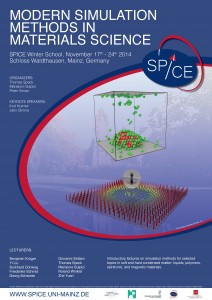
This first SPICE workshop was an introductory workshop incollaboration with TRR 146, MAINZ and the Max Planck Institute for Polymere Research primarily addressing MAINZ students. It focused on simulation methods for selected topics in soft and hard condensed matter: liquids, polymers, spintronic, and magnetic materials.
Scientific Organizers
Thomas Speck, Marialore Sulpizi and Peter Virnau.
Keynote Speakers
Kurt Kremer, Jairo Sinova
Lecturers
Benjamin Krüger, Yi Liu, Burkhard Dünweg, Friederike Schmid, Georg Schwiete, Giovanni Settani, Thomas Speck, Marialore Sulpizi, Roland Winkler, Zhe Yuan
Description
Introductory lectures on simulation methods for selected topics in soft and hard condensed matter: liquids, polymers, spintronic, and magnetic materials.
Program
Click Program for the schedule of the lectures and tutorials
Click here for a pdf poster of the workshop


